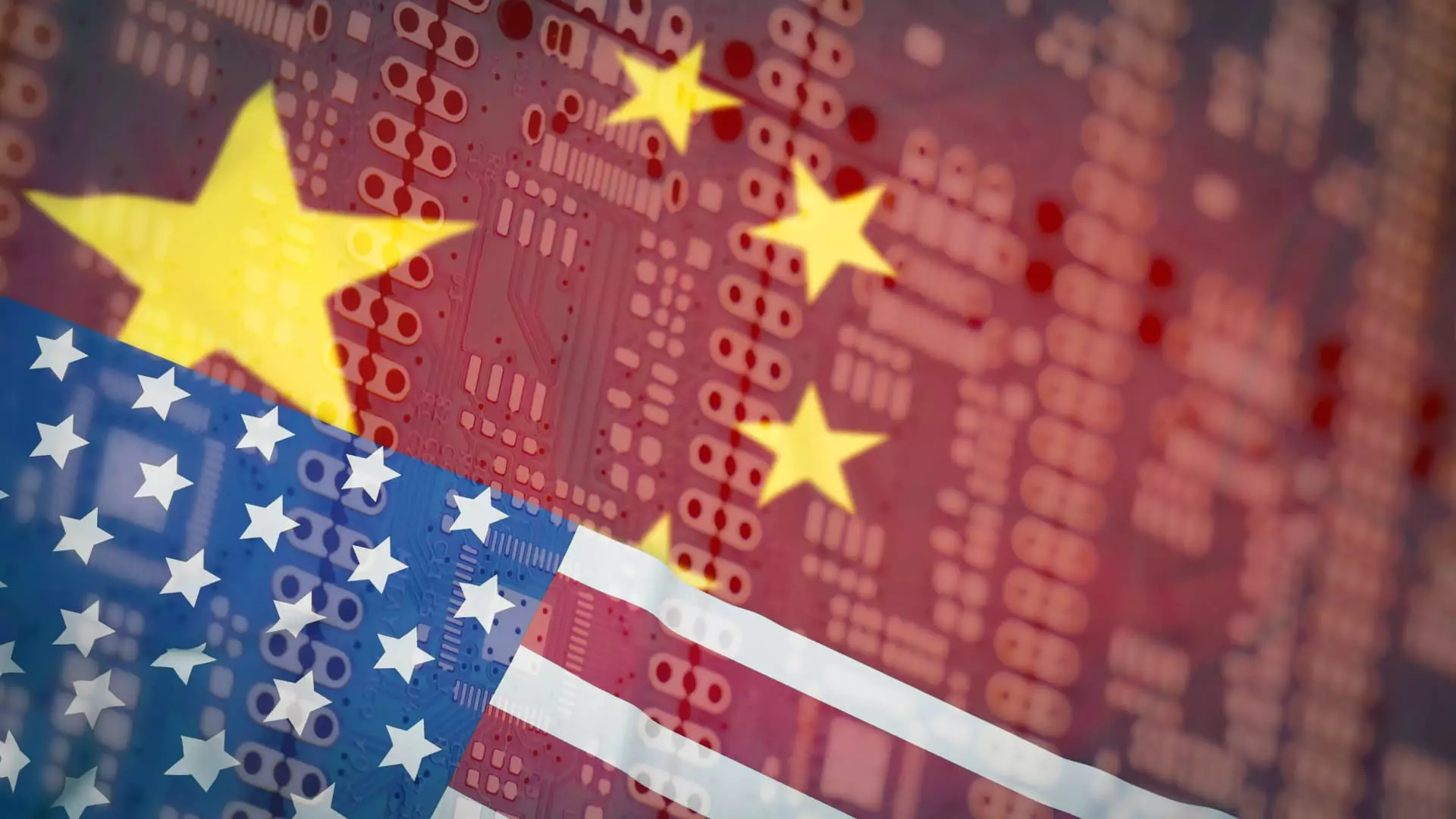In an increasingly competitive landscape influenced by global tensions, Chinese technology behemoths Tencent and Baidu are innovating and adapting their strategies to sustain their growth in artificial intelligence (AI). Despite facing stringent U.S. semiconductor export regulations aimed at curtailing China’s access to advanced technology, both firms are taking decisive actions to mitigate the impact of these restrictions. Their strategies reveal a commitment to resilience and innovation, emphasizing the importance of self-sufficiency and efficient resource utilization amidst external challenges.
Stockpiling and Efficiency: Tencent’s Dual Approach
Tencent’s leadership exemplifies a forward-thinking mindset as they work to evolve their AI capabilities without full reliance on American import chains. Martin Lau, president of Tencent, highlighted the company’s advantageous position concerning chip inventory. By strategically stockpiling high-performance graphics processing units (GPUs), Tencent aims to navigate the semiconductor landscape effectively. Lau argued that their expertise allows them to achieve remarkable AI training outcomes using a smaller pool of GPUs than their American counterparts. This insight signifies a paradigm shift; efficiency, not merely volume, is central to Tencent’s model.
Moreover, Lau emphasized the significance of software optimization over brute-force expansion of hardware. By focusing on improving computational efficiency through software, Tencent is promoting a thoughtful approach to AI, one that prioritizes sustainability and cost-effectiveness. The emphasis on smaller AI models—a nod to limited resources—showcases Tencent’s innovative capacity to achieve significant progress without overextending its technological reach. This multifaceted strategy not only secures its current AI advancements but also positions Tencent for future resilience against evolving global tech challenges.
Baidu’s Full-Stack Focus: A Holistic Approach
On a parallel trajectory, Baidu is employing what it describes as its “full-stack” AI capabilities, which encompass cloud infrastructure, AI model development, and user applications. Dou Shen, president of Baidu’s AI cloud segment, underscored the company’s ability to deliver substantial value even in the absence of cutting-edge semiconductor technology. This highlights Baidu’s blend of resourcefulness and strategic foresight. By leveraging its proprietary technology within its operational framework, Baidu continues to extract significant value while striving to innovate at a reduced cost.
The notion of a full-stack approach is particularly salient in the face of industry pressures. It allows Baidu not merely to survive but to thrive, developing applications like the ERNIE chatbot that stand on their own merits regardless of external technological limitations. Their inclination toward software optimizations further aligns with global trends in tech development, where maximizing existing resources becomes crucial.
Domestic Solutions: The Future of Chinese Semiconductor Development
Both companies are keenly aware that the reliance on foreign semiconductor technology is increasingly precarious. The heightened U.S. sanctions have catalyzed an accelerating shift toward domestic semiconductor fabrication capabilities. Gaurav Gupta, an analyst at Gartner, articulates how consistent advancements in China’s semiconductor ecology position these firms favorably, even if they don’t yet rival American counterparts in chip performance. This ambitious journey towards self-sufficiency in semiconductors encapsulates a national agenda that prioritizes innovation and technological sovereignty.
The focus on cultivating a robust, self-reliant semiconductor industry is not merely a reaction but a proactive strategy aimed at long-term sustainability in AI development. Chinese tech firms are making headway with domestically produced chips, which will form the foundation for innovations and applications in the AI sector for years to come. This alignment between domestic chip production and AI development is critical in mitigating the fallout from international trade tensions, positioning China as a future contender for leadership in AI technology.
U.S. Responses and Global Implications
Nonetheless, the environment remains fraught with complexity. As U.S. semiconductor producers urge for the relaxation of export restrictions, challenges abound on both sides of the Pacific. Nvidia’s CEO, Jensen Huang, characterizes these curbs as damaging to American enterprises, illuminating the delicate balance of competition and collaboration that defines the global tech industry.
The reality is that while restrictions aim to hinder Chinese advancements, they may inadvertently bolster domestic innovation in China, as firms like Tencent and Baidu adapt to leverage local resources. This sets the stage for a technological arms race—not just in terms of hardware but also in the realm of software and application development, where agility and adaptability become the currency of success.
The evolving dynamics underscore a pivotal moment in the tech world—one where competition drives ingenuity and necessitates an evolving strategic playbook for companies on both sides of the divide. As the tension between the U.S. and China continues to unwind, the implications for technology, innovation, and geopolitical relations remain profound and multifaceted, warranting ongoing observation and analysis.


Leave a Reply